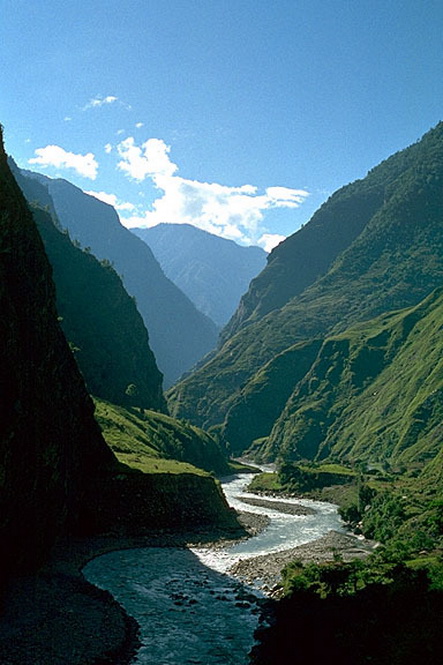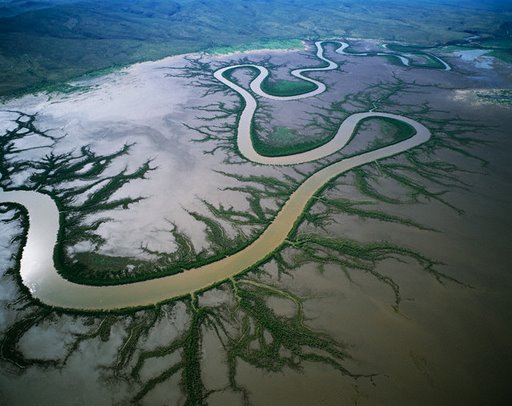

Rivers are a principal agent of erosion and sediment transport from mountain belts to oceans. The understanding of their morphology and dynamics concerns many communities such as civil engineers or physical geographers.
Rivers are generally divided in two types, depending on their interaction with the substrate on witch they flow : Rivers flowing on bedrocks and alluvial rivers.
Bedrock rivers erode their bed via the sediments they carry. These sediments or "tools" abrade the bedrock and the erosion rate depends on hydraulic conditions, the amount of tools available and the strength of the substrate. Since abrasion of the substrate depends on its mechanical properties, one speaks of "detachment limited" process.
Alluvial rivers flow on sediment plains. Because sediments constitute a loose material, offering low resistance to detachment, erosion and transport in these rivers mainly depend on rivers hydraulics and morphology. One speaks of "transport limited" systems.
In fact, sediment transport in these rivers also depends on grain size, that plays the same role as rock strength in bedrock rivers. Thus, the distinction between these two terms is ambiguous. Nevertheless, it grasps the idea that alluvial rivers can carry as many sediments as their hydraulics conditions allow them to do and then can be "saturated" while transport in bedrock rivers is limited by a rate of detachment capped by substrate properties.
Rivers can adopt different shapes depending on their environment and the type of sediments they have to carry. Classically, one distinguishes three types of morphologies : Straight channels, meandering rivers and braiding rivers. The latter (the most complex ones) design rivers flowing through different crossing and interlacing channels that form the general shape of a braid.
© Patrick Meunier